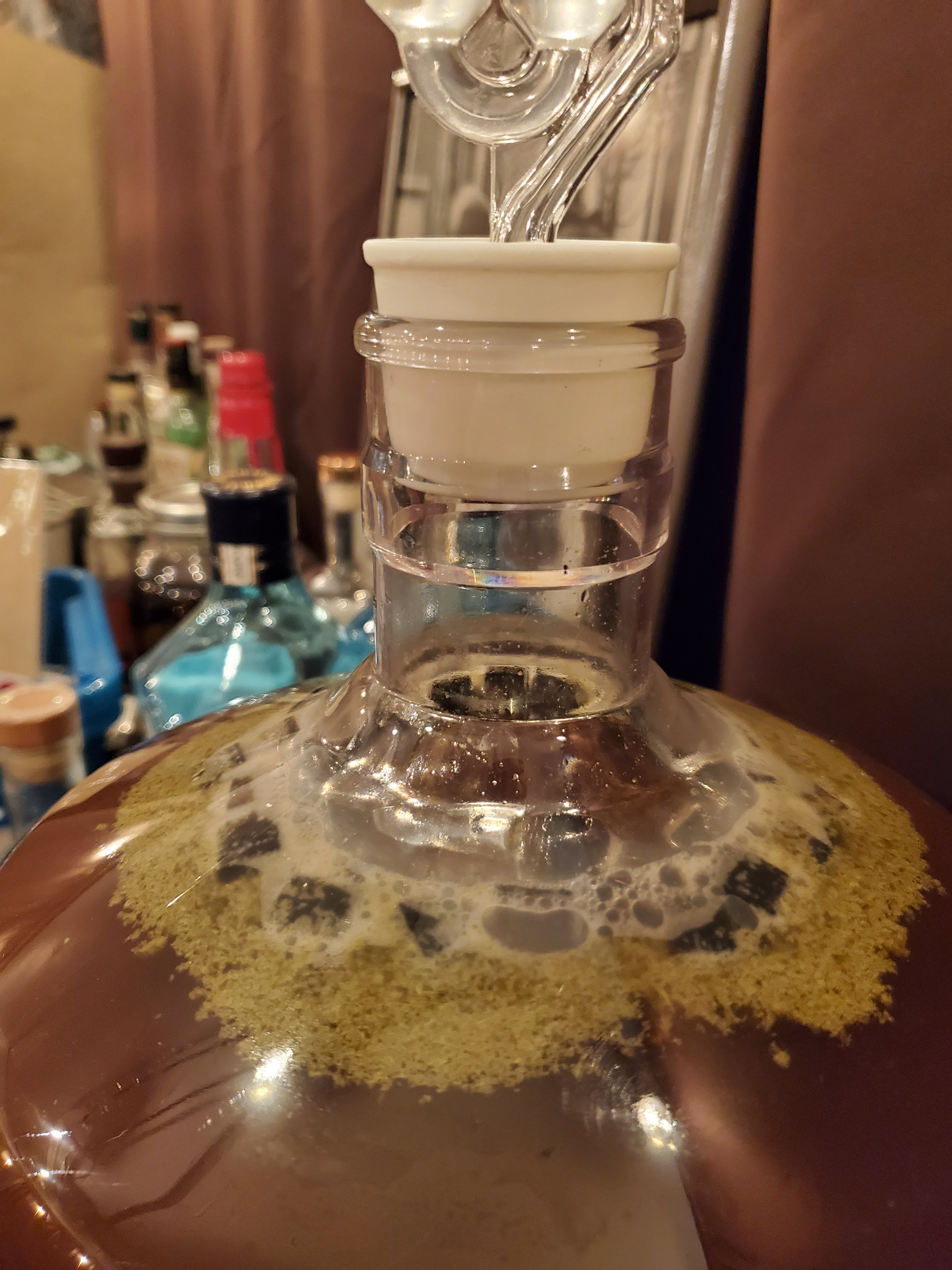schmurf
Well-Known Member
Some time ago I bought a smack pack of Wyeast 9097 Old Ale blend. Never used it before but wanted to try something different in an old ale I was planning, a split batch (2 x 7 liter), one with 9097 and one with my trusty old WLP013. The pack of 9097 was a bit old, but not expired, so I made a 1 liter starter first and put it on the stir plate for about 48 hours. I wasn't home during this time but when I got back it still looked kinda murky, no signs of a krausen, and not finished so I took a gravity reading, and yep... SG was 1.040 which I think was more or less starting gravity, I usually aim for something like that. Anyway, brew day was soon to come so I put it in the fridge to cold crash and wait for later to decide if I was going to use it or not. On brew day some yeast had dropped somewhat to the bottom and I decided to decant some of the starter and use some of it in one batch, but also together with some nottingham dry yeast, just to be on the safe side.
Now, 11 days later, this batch is down from 1.071 to 1.010, giving an AA of 85%, much more than calculated (Wyeast states 75-80% AA) and things looks a bit worrying on the top. Compared to the "reference" batch, WLP013, which has more or less a clean surface, there is something forming on top of this one. Since I've never used a yeast with brett in it I don't know if this is normal or not. Not a great pic unfortunally, it's through the fermenter, I didn't want to open up the lid.

After the experience with the starter I did contact the seller and told them there's probably something wrong with the yeast they sent me, so they kindly sent me a new smack pack. Since I wasn't sure the first brew was going to be what I wanted I decided to make another small batch with the new yeast, but for this one I just made a SNS-starter instead and let it sit for about 24 hours until I was about to use it. This one was looking just like the first one, absolutely no krausen and a gravity reading showed that SG hasn't changed anything at all. Now I really haven't measured gravity for SNS-starters before but I imagine it would at least have been some change in gravity during this time, and defintely a krausen would have been formed. So for this one I decided not to use this yeast and used some Verdant dry yeast instead.
So, am I right thinking there was something wrong with these two packs of yeast or was it just me not knowing how they normaly behave? And what about the attached photo... normal or something unwanted?
Now, 11 days later, this batch is down from 1.071 to 1.010, giving an AA of 85%, much more than calculated (Wyeast states 75-80% AA) and things looks a bit worrying on the top. Compared to the "reference" batch, WLP013, which has more or less a clean surface, there is something forming on top of this one. Since I've never used a yeast with brett in it I don't know if this is normal or not. Not a great pic unfortunally, it's through the fermenter, I didn't want to open up the lid.

After the experience with the starter I did contact the seller and told them there's probably something wrong with the yeast they sent me, so they kindly sent me a new smack pack. Since I wasn't sure the first brew was going to be what I wanted I decided to make another small batch with the new yeast, but for this one I just made a SNS-starter instead and let it sit for about 24 hours until I was about to use it. This one was looking just like the first one, absolutely no krausen and a gravity reading showed that SG hasn't changed anything at all. Now I really haven't measured gravity for SNS-starters before but I imagine it would at least have been some change in gravity during this time, and defintely a krausen would have been formed. So for this one I decided not to use this yeast and used some Verdant dry yeast instead.
So, am I right thinking there was something wrong with these two packs of yeast or was it just me not knowing how they normaly behave? And what about the attached photo... normal or something unwanted?









![Craft A Brew - Safale S-04 Dry Yeast - Fermentis - English Ale Dry Yeast - For English and American Ales and Hard Apple Ciders - Ingredients for Home Brewing - Beer Making Supplies - [1 Pack]](https://m.media-amazon.com/images/I/41fVGNh6JfL._SL500_.jpg)

















































